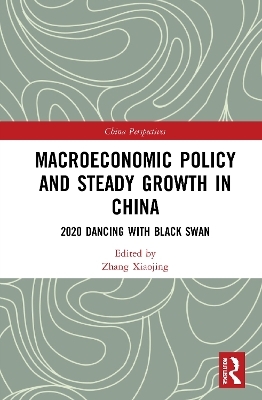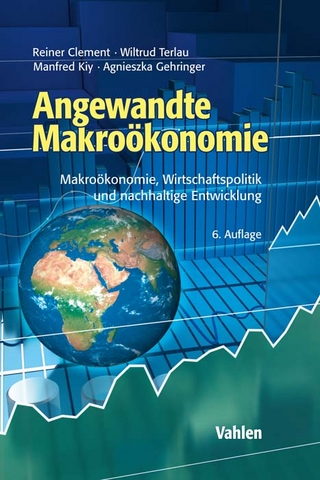
Macroeconomic Policy and Steady Growth in China
Routledge (Verlag)
978-1-032-03338-9 (ISBN)
Since the appearance of macroeconomics in the 1940s, economists have created many theoretical frameworks to explain the origin and mechanism of economic fluctuations. However, few of these have managed to gain explanatory power over reality; nor can they solve real-life problems. This book proposes a new macroeconomic paradigm that makes breakthroughs in these areas.
Based on a balance sheet approach and macro-financial linkage analysis, this book carries out a comprehensive analysis of the trends within China’s macroeconomy in 2020. The author argues that the COVID-19 pandemic created a great degree of uncertainty—therefore, supply-side structural reform and improved total factor productivity have been promoted to ensure a policy of steady growth. Given the declining economic growth rate in percentage terms, China has needed to adapt to a moderate increase in the leverage ratio while applying more effective fiscal policies to achieve a dynamic balance between stable growth and risk prevention.
Scholars and students of economics and finance, especially Chinese economics, will find this book a useful reference.
Zhang Xiaojing is a professor of economics and director of Institute of Finance & Banking (IFB), Chinese Academy of Social Sciences (CASS); director of National Institution for Finance & Development (NIFD); and a member of Chinese Economists 50 Forum. His research interests are open economy macroeconomics, macro finance, and development economics. Wang Pinda is a graduate of Peking University. His research interests include labor economics and macroeconomics. He has translated books about macroeconomic policies of China.
Preface. Part I Introduction. 1. Dancing with the black swan: the balance between economic growth and risk in a new paradigm (Zhang Xiaojing). Part II Stabilizing Growth. 2. The analysis and prospects of consumption (Li Cheng). 3. The analysis and prospects of investment in fixed assets (Liu Xueliang). 4. The analysis and prospects of international trade (Zhang Ying). Part III Stabilizing Leverage. 5. Analysis of the household leverage ratio (Zhang Xiaojing, Chang Xin and Liu Lei). 6. The analysis of the corporate leverage ratio (Zhang Xiaojing, Chang Xin and Liu Lei). 7. The analysis of government leverage ratio (Zhang Xiaojing, Chang Xin and Liu Lei). 8. The analysis of financial leverage ratio (Zhang Xiaojing, Chang Xin and Liu Lei). 9. The estimation of local governments’ hidden debt and its risks (Liu Lei). Part IV Stabilization Policy. 10. Analysis and outlook for fiscal policy (Liu Lei). 11. Analysis and outlook for monetary policy (Chen Hanpeng). 12. The global economic predicament and the transformation of China’s macroeconomic policy (Tang Duoduo). Afterword.
| Erscheinungsdatum | 17.07.2023 |
|---|---|
| Reihe/Serie | China Perspectives |
| Zusatzinfo | 25 Tables, black and white; 122 Line drawings, black and white; 122 Illustrations, black and white |
| Verlagsort | London |
| Sprache | englisch |
| Maße | 156 x 234 mm |
| Gewicht | 453 g |
| Themenwelt | Wirtschaft ► Allgemeines / Lexika |
| Wirtschaft ► Volkswirtschaftslehre ► Makroökonomie | |
| ISBN-10 | 1-032-03338-X / 103203338X |
| ISBN-13 | 978-1-032-03338-9 / 9781032033389 |
| Zustand | Neuware |
| Informationen gemäß Produktsicherheitsverordnung (GPSR) | |
| Haben Sie eine Frage zum Produkt? |
aus dem Bereich


